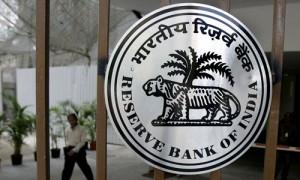 Non-banking finance companies (NBFCs) may soon be asked to raise the bar and adopt the tough asset classification criteria that banks currently use to identify bad and dodgy loans on their books.
Non-banking finance companies (NBFCs) may soon be asked to raise the bar and adopt the tough asset classification criteria that banks currently use to identify bad and dodgy loans on their books.
A panel constituted by the Reserve Bank of India has also proposed to tighten provisioning norms for NBFCs with exposures to the capital market or commercial real estate business.
The working group on the issues and concerns of NBFCs, headed by former RBI Deputy Governor Usha Thorat, has also proposed higher core capital for NBFCs while computing their capital to risk weighted assets ratio (CRAR).
The CRAR is the amount of capital that banks must set aside against the loans they dole out.
The panel was formed to take a fresh look at the regulatory architecture of NBFCs. With bank credit to NBFCs starting to rise, concerns have been expressed in certain quarters that the risks may be transferred from the lightly regulated NBFC sector to the banking sector. However, others reckon that NBFCs should be encouraged since they meet the needs of the productive sectors of the economy.
The panel proposed that in the case of all registered deposit-taking and non-deposit taking NBFCs, the tier I capital (core capital of a lender that includes equity and reserves) for CRAR purposes should be fixed at 12 per cent against 7.5 per cent at present. They should achieve this norm in three years.
It further suggested that NBFCs set aside more money for capital market or commercial real estate lending. It has, therefore proposed to raise the risk weights for NBFCs to 150 per cent for capital market exposures and 125 per cent for commercial real estate exposures from 100 per cent.
This will be applicable for NBFCs that are not sponsored by banks or those that do not have any bank as part of the group. The panel said that in the case of bank-sponsored NBFCs, the risk weights for capital market and real estate should be the same as that specified for banks.
Moreover, if there is an NBFC within a banking group, board approved limits for bank’s exposure to real estate should be applicable for the group as a whole.
At present, NBFCs are subjected to lighter prudential regulations vis-à-vis banks. For instance, the period for classifying loans as NPAs in case of NBFCs is higher at 180 days compared with 90 days for banks.
The panel said that whenever the central bank raised or lowered risk weights and provisioning norms for banks as a part of measures to address systemic risk, they should become applicable to similar assets of NBFCs.





